 August 9, 2018 John E. Ross, KD8IDJ, Editor
| ||||||
Amateur Radio Emergency Service Volunteers Assist in California Fire Response Amateur Radio Emergency Service® (ARES®) volunteers pitched in to assist where needed to provide or support communication during the catastrophic fire in California. Volunteers from multiple ARRL Sections in the state stepped up to help. The fires have claimed several lives, destroyed more than 1,000 homes, and forced countless residents to evacuate, including radio amateurs. ARRL Sacramento Valley Section "This relieved the Sacramento County ARES volunteers who had been up there for several days," Kruckewitt said, adding that communications at the shelter were important, as power and cell phone coverage was often spotty, with power going off for hours at a time. CalFire reported on August 9 that the Carr Fire in Shasta and Trinity counties covered more than 176,000 acres and was 47% contained. Evacuations and road closures are in effect. At one point, more than a dozen ARES volunteers from Shasta, Sacramento, Butte, Placer, Trinity, and El Dorado counties were working at shelters opened in the wake of the Carr Fire.
Sacramento Valley ARES member Michael Joseph, KK6ZGB, served as the liaison at the Red Cross Gold County Region Disaster Operations Center (DOC) in Sacramento, Kruckewitt noted, adding that Joseph had been in the DOC since the fire started. Kruckewitt said Winlink was the go-to mode, as fire has damaged several repeaters and no repeater path exists to the Gold County Region of the Red Cross in Sacramento. "One difficulty we ran into this weekend was that the Red Cross needed [ARES Emergency Coordinator and SEC] contact information for various counties that also are experiencing fires and having to open shelters," he said. Completing that task involved lots of phone calls. "We encourage all ARES members to get to know their neighboring ARES groups and...check into their nets." Joseph reported last weekend that the Mendocino Complex Fire was being closely monitored, although no additional requests for ARES assistance were being made. The Ranch Fire in the Mendocino Complex as of August 9 covered some 253,200 acres and was 46% contained. The Mendocino Complex Fire is being called the largest wildfire in California history, although the Carr Fire has been more devastating. ARES teams in other California Sections remained on standby in case they were needed. ARRL Board of Directors' Committee Seeks Input for Proposed ARES Strategic Plan Following up on an ARRL Board of Directors directive at its July meeting, the Public Service Enhancement Working Group (PSEWG) has contacted all ARRL Section Managers (SMs) and Section Emergency Coordinators (SECs) seeking comments and suggestions regarding the proposed ARES Strategic Plan, via an online form. The deadline is October 31, in order to give the PSEWG sufficient time to review the comments and suggestions, formulate any necessary revisions, and submit the revised document to the Board for consideration at its January meeting.
The ARES Strategic Plan introduces changes and a platform for future growth. For many, this will represent a major paradigm shift; for others, it will formalize many of the requirements they have employed routinely for several years. An independent team of individuals experienced in ARES and emergency work from across the US has reviewed the proposed plan. Their suggestions and recommendations were carefully considered, and many were included in the plan during its development. Now, the ARRL Board wants SMs and SECs to have the opportunity to offer comments on the recommended changes prior to implementation of the plan. While SMs and SECs are invited to reach out to their Emergency Coordinators (ECs) for their thoughts and feedback, formal responses must be submitted through SMs and SECs. The PSEWG asks SMs an SECs to keep their comments respectful, concise, and on point, and to keep in mind that the ARES framework must remain as close to universal as possible, even while participants in some geographical areas may require specific training that others do not need. Mutual aid pacts may require training specific to adjacent jurisdictions. Also, SMs and SECs are reminded that specific agency agreements and needs must be honored. Those having concerns about a proposed new policy are requested to offer alternatives. ARRL Comments in "Strong Opposition" to Part 15 Modification Petition Affecting 5 GHz ARRL has commented in "strong opposition" to a Petition for Rulemaking by RADWIN Ltd. that seeks to amend certain Part 15 rules to permit point-to-multipoint (P2MP) communication services in portions of the 5 GHz band, at power levels now permitted only for point-to-point unlicensed systems. ARRL has focused its concern on proposed high-power P2MP operation in the band from 5.725 - 5.850 MHz, but points out that the entire 5.650 - 5.925 GHz allocation has been "subjected to a continuing series of overlays domestically" for more than 2 decades. Amateur Radio is secondary to military radars on the band.
"It is quite obvious that RADWIN's proposal for simultaneous point-to-multipoint transmission, with higher input power and [effective isotropic radiated power (EIRP)], using an electronic steerable antenna system, presents an exceptionally high interference potential to ongoing, weak-signal Amateur Radio Service communications," ARRL said in its comments filed on July 30. With users located "at all points of the compass from the distribution point," ARRL said, the potential for interference to Amateur Radio "is much greater." Greater yet, ARRL noted, is the potential of interference to users of RADWIN's system. ARRL said the FCC "has no idea at all" about aggregate noise levels in the 5 GHz band in general, while Amateur Radio and Amateur Satellite users have reported increased ambient noise levels in the band, especially near 5.760 GHz. "Both the Petition and the technical statement accompanying the Petition are silent on potential interaction between P2MP simultaneous transmission systems operating at high power, and any Amateur Radio facility," ARRL said. "As a result, the petition is fatally flawed and should be dismissed, relative to the 5.725 - 5.850 GHz band." ARRL asserted that the FCC lacks jurisdiction to authorize Part 15 device operation by rule, "absent a specific finding that the device will not predictably cause interference." Unlicensed, very low-power Part 15 devices may not cause interference to licensed services and must accept any interference caused by a licensed station and must shut down if notified by the FCC that the device is causing harmful interference. Read more. The Doctor Will See You Now! "Antenna Rotators" is the topic of the current (August 2) episode of the "ARRL The Doctor is In" podcast. Listen...and learn!
Every 2 weeks, your host, QST Editor-in-Chief Steve Ford, WB8IMY, and the Doctor himself, Joel Hallas, W1ZR, will discuss a broad range of technical topics. You can also email your questions to doctor@arrl.org, and the Doctor may answer them in a future podcast. Enjoy "ARRL The Doctor is In" on Apple iTunes, or by using your iPhone or iPad podcast app (just search for "ARRL The Doctor is In"). You can also listen online at Blubrry, or at Stitcher (free registration required, or browse the site as a guest) and through the free Stitcher app for iOS, Kindle, or Android devices. If you've never listened to a podcast before, download our beginner's guide. Collegiate QSO Party to Debut in September ARRL's Collegiate Amateur Radio Initiative (CARI) will sponsor the first Collegiate QSO Party in mid-September, just as the fall semester gets under way. The new operating event is part of the larger effort to promote a renaissance of Amateur Radio clubs on college and university campuses. "Discussion of this sort of event has come up in multiple forums at hamfests," the Milluzzi brothers -- Andy, KK4LWR, and Tony, KD8RTT -- told ARRL. "It gained more interest in the last couple of years and was The inaugural Collegiate QSO Party will begin on Saturday, September 15, at 0000 UTC and continue until Sunday, September 16, at 2359 UTC. Using phone, CW, or digital modes, participants will exchange call sign, college/university name, or abbreviation and mascot, and operating class "Existing contests are great for club activity, but there is a critical need to get collegiate stations on the air early in the semester and drum up attention," Andy Milluzzi said. He said the ARRL School Club Roundup (SCR) has been popular with college students, but it's later in the semester, when college students are more deeply involved with their studies. The Society of Midwest Contesters also created the North American Collegiate Championship in conjunction with the North American QSO Party (NAQP) SSB event. Andy Milluzzi said the Collegiate QSO Party hopes to capitalize on the success of both events.
In a nutshell, the concept is an Amateur Radio operating event that focuses on collegiate Amateur Radio, with the goal of promoting student activity, alumni engagement, and community awareness. The contest is open to all radio amateurs, including school clubs from around the world, the Milluzzis said. There is no explicit bonus for DX and no US-specific awards. Points may be earned by individuals, clubs, and collegiate stations. New hams are welcome and collegiate clubs are encouraged to accommodate newcomers. Full details on the Collegiate QSO Party will appear in the September 2018 issue of QST. VP6D Ducie Island 2018 DXpedition Receives ARRL Colvin Award The pending VP6D Ducie Island DXpedition has received a grant from ARRL's Colvin Award Committee, which the VP6D team has characterized as "significant." "We appreciate the confidence ARRL has shown in the VP6D project and the team," a statement on the DXpedition's website said. The Perseverance DX Group (PDXG) is sponsoring the DXpedition, set for October 20 - November 3.
The DXpedition has also announced an addition to the VP6D team -- Rob Fanfant, N7QT, a DXpedition veteran and participant in the 2017 VK9MA Mellish Reef DXpedition. Fanfant was also a member of the VK9WA Willis Island, E51MQT Manihiki, TX5Z Austral Islands, and VK9AN Christmas Island DXpeditions, among others. Currently in northern California preparing the equipment for shipment to M/V Braveheart in New Zealand, the VP6D working group accepted eight complete Elecraft K3S stations for use at VP6D, and they were also given a tour of the Elecraft factory. The gear is the same equipment that operators on the recent KH1/KH7Z Baker Island DXpedition used to rack up nearly 70,000 contacts. Elecraft had the gear to refurbish it for the second DXpedition. "Today, we are continuing the tasks of integrating the radios, computers, software, configuring the network, and preparing the shipping cases," the DXpedition members reported. "We plan an end-to-end test, from the keyboard, to the [satellite internet antenna], to the log server in the Cloud. We expect to have the equipment ready for the customs broker by August 7." The last Ducie Island DXpedition was VP6DX in 2008. Ducie is currently the 21st most-wanted DXCC entity, according to Club Log. It's believed that this would be the fourth DXpedition to Ducie. Hamvention Officials Say No New Building for 2019 Hamvention® and Greene County, Ohio, officials have been unable to reach agreement on erecting a new building that could accommodate Hamvention activities at the Greene County Fairgrounds and Expo Center in Xenia, Ohio.
"Hamvention/Dayton Amateur Radio Association has spent many hours working with Greene County officials to reach an agreement on a long-term contract where both the Fairgrounds and Hamvention would feel comfortable erecting a new building," read an August 5 statement from Hamvention General Chairman Jack Gerbs, WB8SCT, and Assistant Chair Rick Allnutt, WS8G. "Unfortunately, we have currently been unable to successfully reach an agreement satisfactory to all parties." Gerbs was quick to reinforce that Hamvention continues to have an excellent relationship with the county and the Fair Board, but it does mean there will not be a new building in time for Hamvention 2019. In January, Hamvention walked back an earlier announcement that a new building would be erected in time for the 2018 show. At the time, then-General Chair Ron Cramer, KD8ENJ, anticipated that construction would be completed this year in time for Hamvention 2019. Gerbs cited some significant upgrades accomplished in 2018, including improved tent shelters, permanent paths in the flea market area, and an additional forum room. "More improvements are planned for 2019," Gerbs and Allnut said. "We hope the Amateur Radio community will understand and continue to support the event as enthusiastically as in the past." Amateur Radio Satellite Pioneer, Past AMSAT President Bill Tynan, W3XO, SK A giant of the Amateur Radio satellite world has fallen. William A. "Bill" Tynan, W3XO, of Kerrville, Texas, died on August 7, following a lengthy illness. A past AMSAT President and the editor of QST's "The World Above 50 MHz" column from 1975 until 1992, Tynan was 91. As a youngster in Washington, DC, he was entranced by shortwave broadcasts and police radio traffic on his three-band table radio. "I started listening to hams on 20 meters and was hooked by the thought of becoming one," Tynan said in his Amateur Radio biography, My Radio Life. That didn't happen until after World War II in 1946, when he became W3KMV. He was an early enthusiast and proponent of FM, which helped to put him on his path to broadcasting, VHF, and ham radio satellites.
In 1961, Tynan and Bob Carpenter, W3OTC (SK), founded the Washington, DC, market's first FM stereo station, WHFS in Bethesda, Maryland. After he passed his Amateur Extra exam in 1974, Tynan opted for W3XO, the call sign of Washington's first FM radio station in the experimental years. His eager curiosity for VHF and above led him in 1969 to attend the first meeting of what would become AMSAT. He would become AMSAT President in 1991, serving for 7 years and rubbing shoulders with other Amateur Radio satellite titans. In his later years, Tynan served as AMSAT's OSCAR Number Administrator, the individual who confers alphanumeric designators on qualifying Amateur Radio satellites. He stepped down from that volunteer role in July after 2 decades of service. Through his QST column, Tynan was an early proponent of using grid squares as VHF/UHF contest multipliers. That led directly to ARRL's VUCC operating award program for 50 MHz and above. He also was a strong proponent of establishing beacon stations on VHF as well as a DX window and 50.125 MHz domestic calling frequency on 6 meters, and later 144.200 MHz on 2 meters. Tynan played a key role as AMSAT's Vice President for Human Spaceflight (earlier "Manned Space") in convincing NASA to permit Amateur Radio operation from the space shuttles. The early SAREX (Shuttle Amateur Radio EXperiment) led to the current Amateur Radio on the International Space Station (ARISS) program that offers students a chance to speak directly to International Space Station (ISS) crew members via ham radio. He also was a significant supporter of the ARISS interoperable radio system project, soon set to fly to the ISS.
Tynan was a Life Member of ARRL, AMSAT (holding Life Member No. 10), and IEEE. In addition to his time as AMSAT President, Tynan served on the AMSAT Board of Directors from 1986 until 2003 and was its chairman for his final 5 years. In 1996, he was named as the 1996 Hamvention® "Amateur of the Year." "Amateur Radio is becoming more exciting to me every day," he said in concluding My Radio Life, written while he was in his 80s. "And, I'm still learning." Read more. Launch of Es'hail-2 with First Phase 4 Amateur Transponders Expected Later this Year Es'hailSat, the Qatar Satellite Company, has tweeted that it's anticipating that SpaceX will launch its geostationary Es'hail-2 satellite sometime in the fourth quarter of 2018. The commercial Qatari satellite will provide the first Amateur Radio geostationary communication and will be capable of linking amateurs from Brazil to Thailand.
The narrowband analog linear transponder downlink will cover 10489.550 - 10489.800 MHz with 100 W output. The uplink will be 2400.050 - 2400.300 MHz. The wideband digital transponder will downlink on 10491.000 - 10499.000 MHz with 100 W output. The uplink passband will be 2401.500 - 2409.500 MHz. Both transponders will be equipped with antennas capable of providing full coverage over about one-third of Earth's surface. The Qatar Amateur Radio Society (A71A) and Qatar Satellite Company are cooperating on the Amateur Radio project. AMSAT-DL is providing technical support. Read more. In Brief...
The K7RA Solar Update Tad Cook, K7RA, Seattle, reports: According to Spaceweather.com reported on August 8, "Solar minimum conditions are in effect. The sun has been without sunspots for 39 of the past 42 days." Spaceweather.com said a similar stretch of blank suns has not happened since 2009, "when the sun was experiencing the deepest solar minimum in a century."
Average daily solar flux rose slightly from 68 to 69.7, while average daily planetary A index rose from 5 to 5.7, and average mid-latitude A index edged upward from 5.1 to 6.9. Six meters has experienced some excellent openings recently, with some operators taking advantage of FT8. Sunspot numbers for August 2-8 were 11, 0, 0, 0, 0, 0, and 0, with a mean of 1.6. The 10.7-centimeter flux was 69.9, 70.2, 70.4, 69.2, 69.1, 69.5, and 69.6, with a mean of 69.7. Estimated planetary A indices were 6, 6, 5, 4, 4, 10, and 5, with a mean of 5.7. Estimated mid-latitude A indices were 6, 6, 8, 6, 5, 11, and 6, with a mean of 6.9. My Friday propagation bulletin will include additional details. Send me your propagation and space weather observations. Just Ahead in Radiosport
See the ARRL Contest Calendar for more information. For in-depth reporting on Amateur Radio contesting, subscribe to The ARRL Contest Update via your ARRL member profile email preferences. Upcoming ARRL Section, State, and Division Conventions
Find conventions and hamfests in your area.
. .
Subscribe to...
Free of charge to ARRL members...
| ||||||
.JPG) Emergency Coordinator (SEC) Greg Kruckewitt, KG6SJT, said that the last ARES volunteers deployed to support American Red Cross shelter stood down on August 7. Other shelter communicators deployed earlier remained on duty for 10 days. Initially, there were four shelters in Redding. On August 5, the Shasta-Tehama ARES team was able to take its communications trailer to Trinity County to support a shelter in Weaverville opened for Carr Fire evacuees, he said.
Emergency Coordinator (SEC) Greg Kruckewitt, KG6SJT, said that the last ARES volunteers deployed to support American Red Cross shelter stood down on August 7. Other shelter communicators deployed earlier remained on duty for 10 days. Initially, there were four shelters in Redding. On August 5, the Shasta-Tehama ARES team was able to take its communications trailer to Trinity County to support a shelter in Weaverville opened for Carr Fire evacuees, he said.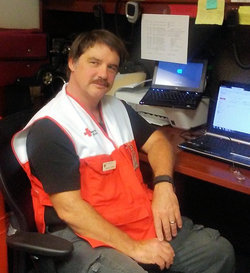
.jpg) Created in 1935, ARES has undergone very few changes over the years, while the agencies ARES serves have undergone many. The PSEWG evaluated the ARES program for 2 years and drafted several proposed enhancements aimed at updating the program.
Created in 1935, ARES has undergone very few changes over the years, while the agencies ARES serves have undergone many. The PSEWG evaluated the ARES program for 2 years and drafted several proposed enhancements aimed at updating the program. ARRL said the Amateur Radio national "weak-signal" calling frequency of 5.760.1 GHz already has experienced a "very substantial" rise in ambient noise in many areas that has significantly affected Amateur Radio operation in the 200 kHz centered on that frequency, where extremely weak received signal levels are typical. Only low-density usage and the low-power levels permitted for unlicensed national information infrastructure (U-NII) devices have sustained "a good deal of compatibility" between Amateur Radio and U-NII devices at 5 GHz, ARRL said.
ARRL said the Amateur Radio national "weak-signal" calling frequency of 5.760.1 GHz already has experienced a "very substantial" rise in ambient noise in many areas that has significantly affected Amateur Radio operation in the 200 kHz centered on that frequency, where extremely weak received signal levels are typical. Only low-density usage and the low-power levels permitted for unlicensed national information infrastructure (U-NII) devices have sustained "a good deal of compatibility" between Amateur Radio and U-NII devices at 5 GHz, ARRL said. Sponsored by
Sponsored by 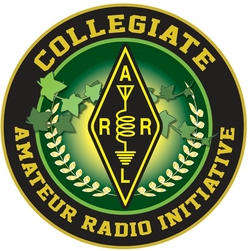 a hot topic of debate at the ARRL Collegiate Amateur Radio Initiative Forum at Hamvention® this past May. The rules were formulated by current students, faculty, and alumni of collegiate clubs. We are excited to see things materialize and are happy to help organize the event."
a hot topic of debate at the ARRL Collegiate Amateur Radio Initiative Forum at Hamvention® this past May. The rules were formulated by current students, faculty, and alumni of collegiate clubs. We are excited to see things materialize and are happy to help organize the event.".jpg)
.jpg) Funded by an endowment established by Lloyd D. Colvin, W6KG (SK),
Funded by an endowment established by Lloyd D. Colvin, W6KG (SK), .JPG)
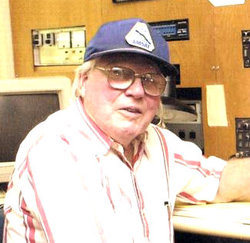 In late 1951, he signed on with the Johns Hopkins Applied Physics Laboratory, where he worked on US Navy weapons system projects. He rose to the level of Senior Staff Engineer before retiring in 1988, when he and his wife Mattie relocated to the Hill Country of Texas.
In late 1951, he signed on with the Johns Hopkins Applied Physics Laboratory, where he worked on US Navy weapons system projects. He rose to the level of Senior Staff Engineer before retiring in 1988, when he and his wife Mattie relocated to the Hill Country of Texas.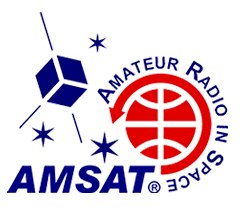 Tynan was among the initial proponents of AMSAT's ambitious Phase 3D geostationary satellite program, working tirelessly to raise the considerable funds needed and to recruit the personnel to determine the project's direction. The Phase 3D satellite, designated as AO-40, was successfully launched in 2000.
Tynan was among the initial proponents of AMSAT's ambitious Phase 3D geostationary satellite program, working tirelessly to raise the considerable funds needed and to recruit the personnel to determine the project's direction. The Phase 3D satellite, designated as AO-40, was successfully launched in 2000.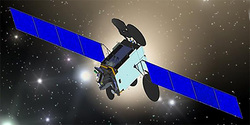 Es'hail-2 will carry two AMSAT-DL-designed Phase 4 Amateur Radio transponders operating in the 2.4 GHz and 10.450 GHz bands. A 250 kHz bandwidth linear transponder is intended for conventional analog operation, while an 8 MHz bandwidth transponder will serve experimental digital modulation schemes and DVB amateur television. The satellite will be positioned at 26° east. Es'hailSat said the new satellite "will allow also the AMSAT community to validate and demonstrate their DVB standard."
Es'hail-2 will carry two AMSAT-DL-designed Phase 4 Amateur Radio transponders operating in the 2.4 GHz and 10.450 GHz bands. A 250 kHz bandwidth linear transponder is intended for conventional analog operation, while an 8 MHz bandwidth transponder will serve experimental digital modulation schemes and DVB amateur television. The satellite will be positioned at 26° east. Es'hailSat said the new satellite "will allow also the AMSAT community to validate and demonstrate their DVB standard."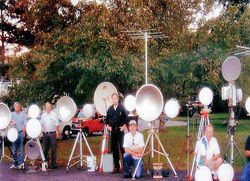 Microwave Update (
Microwave Update (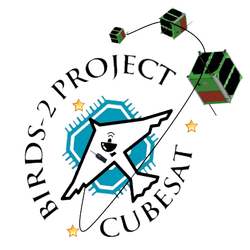 The
The  Great Lakes HamCon 2.0, set to occur in October at Michigan International Speedway, has been cancelled. The second Great Lakes HamCon had been sanctioned as the 2018 ARRL Michigan State Convention. In announcing the cancellation, sponsors said failure to come to a final agreement for the use of the Speedway led to the difficult decision to cancel the event. "With just 2 months remaining before the event, the issues caused by the lack of agreement were found to be insurmountable," sponsors said. All who purchased tickets will receive refunds. PayPal ticket purchases will be handled via PayPal.
Great Lakes HamCon 2.0, set to occur in October at Michigan International Speedway, has been cancelled. The second Great Lakes HamCon had been sanctioned as the 2018 ARRL Michigan State Convention. In announcing the cancellation, sponsors said failure to come to a final agreement for the use of the Speedway led to the difficult decision to cancel the event. "With just 2 months remaining before the event, the issues caused by the lack of agreement were found to be insurmountable," sponsors said. All who purchased tickets will receive refunds. PayPal ticket purchases will be handled via PayPal.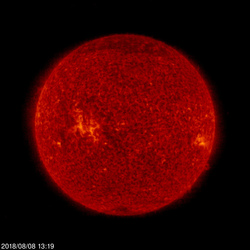 For the third week in a row, we report an average daily sunspot number of 1.6, because in the three most-recent reporting periods, there was only 1 day with any sunspots, and each time that daily sunspot number was 11.
For the third week in a row, we report an average daily sunspot number of 1.6, because in the three most-recent reporting periods, there was only 1 day with any sunspots, and each time that daily sunspot number was 11.







